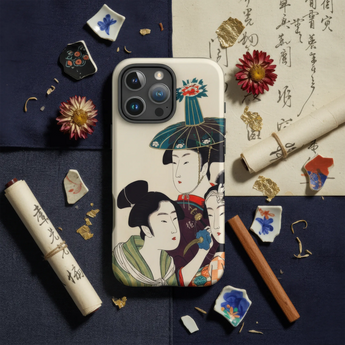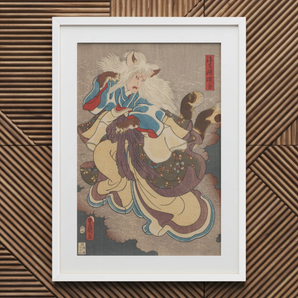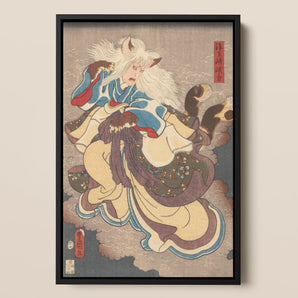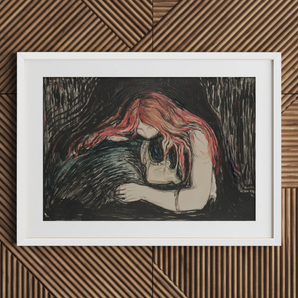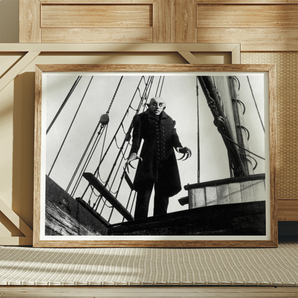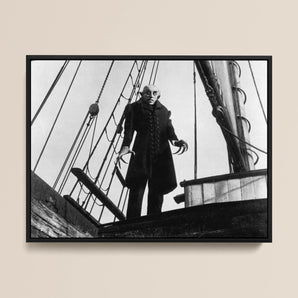Ohara Koson
Dive into the enchanting world of Ohara Koson, the Japanese maestro who wielded his woodblock like a magician's wand, conjuring exquisite kachō-e designs that dance between reality and dreams. Born in 1877 in Kanazawa, Koson didn't just create art; he orchestrated visual symphonies where every bird's feather and flower petal played a crucial note in the composition of beauty.

Quick view 
Quick view 
Quick view 
Quick view 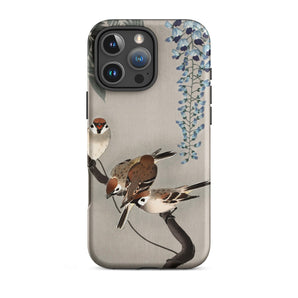
Quick view 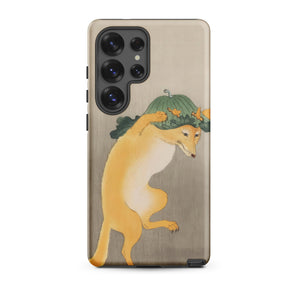
Quick view 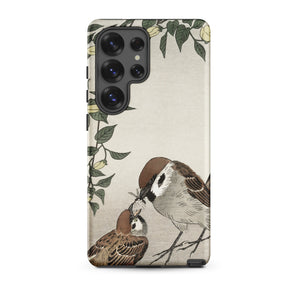
Quick view 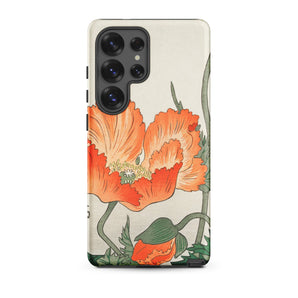
Quick view 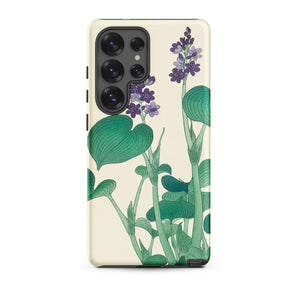
Quick view 
Quick view 
Quick view 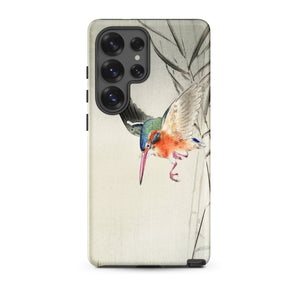
Quick view 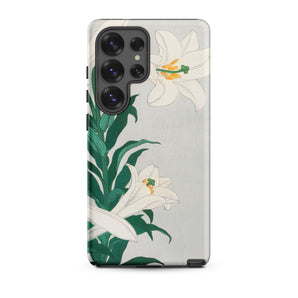
Quick view 
Quick view 
Quick view 
Quick view 
Quick view 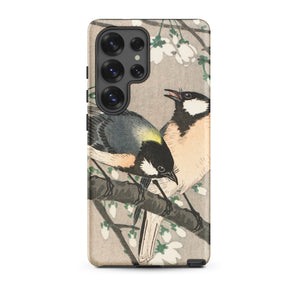
Quick view 
Quick view 
Quick view 
Quick view 
Quick view 
Quick view 
Quick view 
Quick view 
Quick view 
Quick view 
Quick view -
Go Treasure Hunting
Your Latest Loves
FAQs
About this collection
As a pivotal figure in the shinsaku-hanga and shin-hanga movements, Koson was the alchemist who transmuted the fading gold of traditional ukiyo-e into a new, radiant alloy of East and West. His 500-strong portfolio isn't just a collection of prints; it's a time capsule of Japan's soul, capturing the nation's heartbeat during the tumultuous Meiji, Taishō, and Shōwa periods.
Koson's genius lay in his ability to infuse life into static images - his cranes seem poised to take flight off the paper, while his cherry blossoms whisper ancient poems to the wind. Each print is a masterclass in the art of observation, where the play of light and shadow tells stories as profound as any novel.
Though his star waned after his death in 1945, Koson's artistry, like a phoenix, has risen from the ashes of obscurity, reclaiming its rightful place in the pantheon of ukiyo-e giants. To own a Koson print is to possess a slice of Japan's artistic renaissance, a moment when tradition and innovation waltzed in perfect harmony.
...
A heron lifts into the dawn, its wings dissolving into mist. A sparrow trembles on the edge of a branch, the silence before flight held in a single stroke of ink. This is Ohara Koson, the quiet revolutionary of kachō-e, where nature is not just observed but felt—where woodblock prints hum with the breath of the wind, the hush of snowfall, the stillness of a pond unbroken.
His Meiji, Taishō, and Shōwa-era prints are more than depictions of birds and flowers; they are echoes of an older world, one where time lingers in the arch of a crane’s neck, the pale curve of a peony before bloom.
At the heart of shin-hanga, he wove Western realism into the delicate precision of ukiyo-e, layering graduated color tones that deepened shadow and light.
Under the press of Watanabe Shōzaburō’s publishing house, Koson perfected a style where feathers shimmered like silk, where an owl against the moon held the hush of eternity. Each artwork is a moment caught between movements—a fleeting world, made permanent.
His birds do not fly; they linger in memory, etched in the grain of wood and the hush of ink.
What are Ohara Koson's most famous works?
The sky bends under the weight of wings, the hush before flight held forever in ink. Ohara Koson, master of the fleeting, carved the movement of birds into the heart of shin-hanga.
His most evocative compositions include "Kingfisher with Lotus Flower," where water trembles beneath a poised hunter, and "Crow on a Cherry Branch," where winter’s silence is measured in the arch of black feathers against pale blooms.
He captured the hush of twilight in "Owl and Moon," where darkness gathers in quiet pools of ink, and the quiet grace of stillness in "Two Deer Next to Pine Trees." His "Flycatcher on Cucumber Bush" turns the ordinary into a moment of near-reverence, a testament to his unparalleled ability to blur the line between print and painting.
Koson's artwork aren't just images; they're stories—whispered in the rustle of leaves, the flutter of wings, the hush before dawn breaks.
Why was Ohara Koson such a significant part of the Shin-hanga Movement?
There are revolutions that shout, and those that whisper. Koson’s was the latter. In the early 20th century, as shin-hanga revived the nearly forgotten art of Japanese woodblock printing, Koson stood at the vanguard, weaving Western perspective and subtle tonal gradation into the crisp elegance of ukiyo-e.
His works shimmered with intricate detail, each feather carved with near-obsessive precision, each petal pressed with the weight of a thousand years of artistic tradition.
Under the guidance of Watanabe Shōzaburō, he perfected the multi-step process that gave his prints their signature depth—graduated colors, layered pigments, a sense of breath within the stillness.
His art was not about capturing nature—it was about dissolving into it. The way a blossom bends under the weight of morning dew, the way a bird pauses mid-song—Koson’s prints held these fleeting moments, making them eternal.
Why is Ohara Koson associated with kachō-e?
A branch bends under the weight of a sparrow. A lotus shivers as a kingfisher dives. These are not just images; they are echoes of an ancient genre—kachō-e, the art of birds and flowers, where nature is not simply rendered but revered.
Koson’s work in Meiji, Taishō, and Shōwa-era Japan breathed new life into a tradition that had drifted from favor. His meticulous pairing of birds with specific flora was not accidental—each combination whispered of symbolism. Cranes meant longevity. Cherry blossoms meant impermanence. Even the smallest creature, perched in the right place, carried a weight beyond its form.
He followed a lineage traced back to the Muromachi era, when Zen monks first painted birds alongside wild grasses and plum blossoms, each stroke an act of meditation. In Koson’s hands, these traditions did not simply persist—they transformed, blending East and West, silence and movement, realism and dream.
What is the difference between kacho-e and ukiyo-e?
To understand kachō-e, you must first hear the wind in the trees, the call of a bird just before dawn. It is a genre within ukiyo-e, but where ukiyo-e captured the fleeting pleasures of Edo’s floating world, kachō-e captured something quieter—the breath of nature, the hush of petals unfolding.
Ukiyo-e, the art of the everyday, belonged to the streets of Edo—kabuki actors in vivid robes, courtesans trailing silk, merchants crossing wooden bridges. It told stories of people and places, framed in bold lines and vivid pigments. But kachō-e turned away from the clamor of the city, seeking instead the rhythms of the natural world.
Koson mastered this distinction, painting birds not as mere subjects but as poems in motion, their wings caught mid-beat, their shadows stretching across misted ponds. Where ukiyo-e captured a world of transience, kachō-e held something more elemental—a moment of stillness, deep enough to last forever.
What techniques did Koson use to create thier work?
Wood, ink, paper—simple materials, but in Koson’s hands, they held the weight of centuries. His prints walked the line between traditional Japanese woodblock printing and Western-inspired realism, a delicate balance achieved through painstaking technique.
Each image began with hand-carved woodblocks, layered meticulously to produce graduated color tones so soft they seemed to dissolve into the air.
His meticulous attention to feather detail, the shimmer of mica-infused pigments, the near-invisible brushstrokes—these elements blurred the boundary between painting and print.
But Koson was not simply a technician; he was an artist of light and shadow, a master of ephemeral beauty. Some prints were issued in multiple color variations, shifting with the seasons, their soft watercolor-like hues lending them the impermanence of a landscape at dusk.
Under the Shin-hanga movement, his collaboration with Watanabe Shōzaburō led to refinements in printing techniques that gave his work its signature depth—a whisper of realism, softened by the dreamlike quality of traditional Japanese aesthetics.
His prints do not merely depict birds; they pulse with life, suspended between flight and stillness, caught forever in the hush of ink and paper.
What other Japanese artists can I find here?
Where can my order ship to?
Any treasure you find here can be shipped to:
North America
Canada, Mexico, Continental United States
South America
Argentina, Brazil
Europe
Albania, Andorra, Austria, Belgium, Bosnia & Herzegovina, Bulgaria, Croatia, Cyprus, Czechia, Denmark, Estonia, Faroe Islands, Finland, France, Germany, Gibraltar, Greece, Greenland, Guernsey, Hungary, Iceland, Ireland, Isle of Man, Italy, Jersey, Kosovo, Latvia, Liechtenstein, Lithuania, Luxembourg, Malta, Monaco, Montenegro, Netherlands, North Macedonia, Norway, Poland, Portugal, Romania, Russia, San Marino, Serbia, Slovakia, Slovenia, Spain, Sweden, Switzerland, United Kingdom, Vatican City
Middle East & Asia
China, Hong Kong, India, Indonesia, Israel, Japan, Lebanon, Malaysia, Philippines, Singapore, South Korea, Taiwan, Thailand, Türkiye, United Arab Emirates, Vietnam
Africa
South Africa
Oceania
Australia, New Zealand
—
Every package tracked so you can watch your treasure move from A to B to You.
Sent carbon neutral at no extra charge. Helping you gain peace of mind your money's being kind.
Orders to the rest of the world coming as soon as I can!
How much will shipping cost?
Delivery to 60+ countries
Free shipping worldwide — check if we ship to you
When will my package arrive?
USA: 4-9 days • Canada: 5-12 days • UK: 4-9 days • Europe: 5-10 days • Australia: 4-9 days • New Zealand: 5-12 days • Rest of the world: 3-4 weeks
Why the wait? Every treasure you find here is produced after you purchase. So the delivery times include production, quality assurance, thoughtful packaging and shipping. More details on orders and shipping
Every package tracked so you can watch your treasure move from A to B to You.
Sent carbon neutral at no extra charge. Helping you gain peace of mind your money's being kind.
Can I return my order?
1. Open Request
You're welcome to open a return / exchange request within 30 days of your order's delivery. All items for return must be delivered back in their original condition, with their original packaging included.
2. Wait For Approval
Expect a reply within 24-48hr
Once your return's approved, you'll receive the return address, so you can mail items back with confidence. Please wait for approval before mailing anything, to avoid confusion and disappointment.
3. Return Items
Return shipping: You pay for return shipping fees unless you received faulty / incorrect items or they get damaged in transit.
Tracking: Please send your items back with tracking. No refunds can be given for items that aren't received.
On sale: No returns or exchanges for discounted / on sale items unless they arrived damaged or faulty.
Payment method: After your return's approved, you'll be refunded via your original payment method.
...
Learn more about my step-by-step returns process.






























